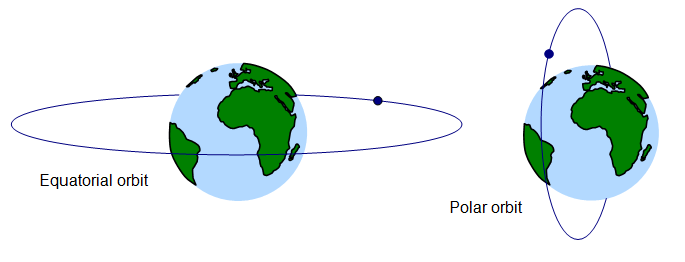The artificial satellites have generally three types of orbits:
- Polar orbits
- Equatorial orbits and
- Geosynchronous orbits
Polar Orbits
The orbits passing over the poles of the earth are called polar orbits. These orbits are present at the height of about 1000 km from the earth. The satellites which are used for remote sensing and weather forecasting have polar orbits. The time taken by the satellites in a polar orbit to complete one revolution around the earth is usually less than 2 hours. So, these satellites can revolve several times around the earth in a day.
Equatorial Orbits
The orbits parallel to the equator of earth are called equatorial orbits. Equatorial orbits are suitable for geostationary satellites.

Geostationary Satellites or Geosynchronous Satellites
If the position of a revolving satellite does not change with time with respect to earth, then such satellite is called geostationary satellites or geosynchronous satellites. And the orbit in which a geostationary satellite revolves around the earth is called geostationary orbit or geosynchronous orbit. In fact, geostationary satellites revolve around the earth with the same speed with which the earth revolves around its own axis, i.e. 24 hours. That is why these satellites appear to be stationary in the sky. These satellites are used for communication.
Test Your Understanding and Answer These Questions:
- What is definition of orbit of a satellite?
- What are different types of orbits of a satellite?
- What is a polar orbit?
- What is an equatorial orbit?
- What are geosynchronous satellites?
